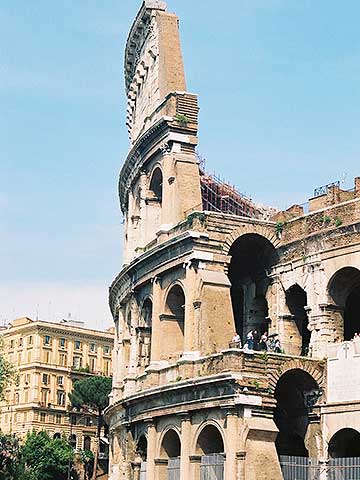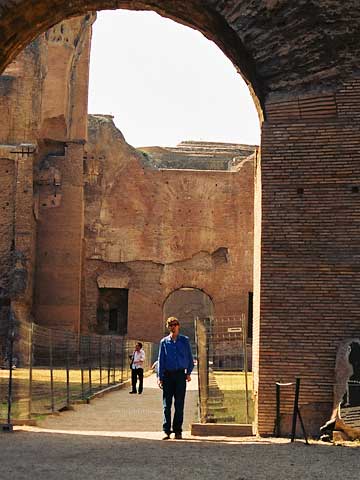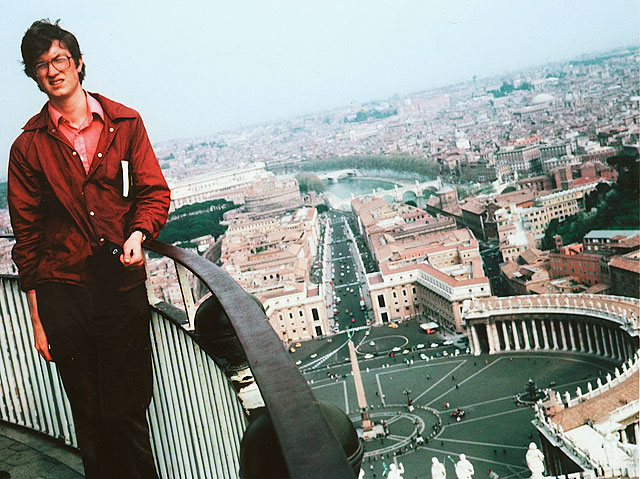









 |
|||||||||
 |
|||||||||
 |
 |
 |
 |
||||||
 |
|||||||||
 |
 |
||||||||
 |
|||||||||
 |
Exterior of Roman Colosseum. The Mammoth Stadium was the scene of countless deadly battles between gladiators and animals for almost five centuries after 79 AD. Made of travertine and marble, it had a seating capacity of 50,000 and endured several earthquakes and much vandalism afterwards. |
 |
Here I am at the Terme di Caracalla (Baths of Caracalla) in Rome. Romans of all classes used these baths for some three hundred years until the invading Goths cut off the water supply around 517 AD. Mostly tall walls remain, yet there are also mosaics depicting art scenes as on the bottom right. |
 |
Atop the observation cupola of the dome of St Peter’s Basilica in Vatican City, viewing St. Peter’s Square with the obelisk in center and east toward Rome. St Peter’s is probably the greatest church in Christianity. The tomb of St Peter is inside the sanctuary along with Michelangelo’s famous statue, the Pieta, and a very elaborate design. Michelangelo was also the architect of the dome of St Peter’s and the famous Baroque sculptor Bernini designed the colonnade of statues surrounding the square below. St Peter’s was completed in the early 1600s and is the second-tallest religious building in the world. |